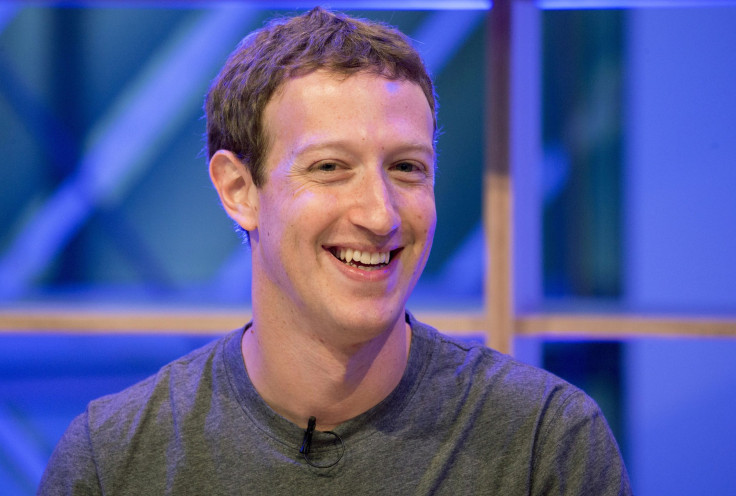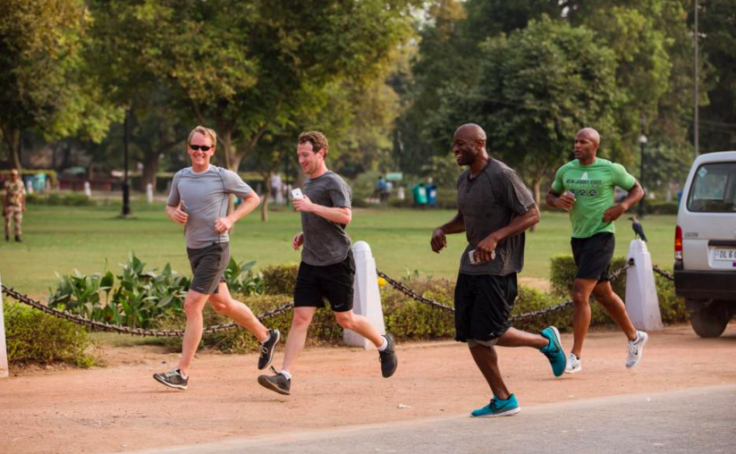Facebook F8 Attracts Indian Developers As Social Network Ups Advocacy For Emerging Markets

SAN FRANCISCO — Ime Archibong, director of strategic partnerships at Facebook, has traveled to India 10 out of the past 11 months (17 hours on a plane, each way.) The engineer-turned-manager has visited the country to meet with established businesses and startups that already employ or sign on to Facebook’s services.
Although he’s traveled elsewhere (“Name any country,” he jokes), Archibong has made India a top priority. India is Facebook’s second-largest market in terms of number of active users and its fastest-growing one as more people get online. Last year, Facebook CEO Mark Zuckerberg visited New Delhi to pitch his company’s Internet.org project. “Our mission is to connect everyone in the world,” Zuckerberg said. “You can’t do that without connecting the people in India.”
But, for Facebook, the goal isn’t just to get more people onto the social network: India is also its second-largest hub of developers after the U.S. The company is looking to help business leaders and entrepreneurs create businesses with its support. “Our products that we build people in-house reach 1.6 billion around the world, but [developers are] going to be building the right and relevant tools for us to be truly global,” Archibong said.
Facebook will release more products and services Tuesday, to be announced during the company’s annual developer conference called F8. At the event, more than 2,000 developers, including partners in India, will attend panel discussions and meet with Facebook employees to get ideas on how to leverage the new offerings.
Yet, the conversations have been going on for much longer than the 48 hours to be spent at the Fort Mason Center in San Francisco. Indeed, several of the updates being released were inspired by the meetings the team has had over the past year, noted Eddie O’Neil, product manager at Facebook.
Archibong and O’Neil work on the two main pillars of Facebook’s developer relations initiative. Archibong oversees outreach and engagement, while O’Neil strategizes and creates the products for this community. They work together in that Archibong’s team will send feedback reports that can inform, and have informed, what O’Neil’s team builds.
“As the next billion people start to get phones and go online, there [are] developers in that billion that could use the products, services and consumer experiences we have,” O’Neil said.
Facebook’s in-house community devoted to developer relations has grown from a handful of employees six years ago, Archibong noted, to dozens in seven offices around the world at present. In May 2014, the company launched FbStart, a program to provide free tools to developers. The team is “trying to understand where [developers] are technically and culturally: different regions, different countries, that have different opportunities and challenges,” Archibong said.
For example, Facebook last year developed a new iteration of Facebook Lite, a version of the flagship application designed for use on 2G networks and other slow connections. The app has 100 million monthly active users, the company announced last month.
Archibong works with the developer community to learn what is most useful to its members. That could mean helping a developer to decide whether to create a product for the Messenger Platform that Facebook released at F8 last year, for the larger platform or for Facebook Lite.
Facebook’s availability and transparency has long been respected by the developer community. “Facebook has been in a consistent good ecosystem with developers and has invested in a lot. They’re handing out very good infrastructure, and their documentation is great,” said Avi Flombaum, a co-founder and the dean of the Flatiron School, a programming school based in New York.
That enthusiasm exists even after Facebook announced this year it was closing down Parse, its back-end services and software development kit. The unexpected shutdown did sow distrust among some developers, the San Francisco Chronicle reported.
But developers are bullish on remaining services such as Facebook Login. “People have trusted the one-tap sign-in, especially on mobile. It has a convenience and trust factor,” said Yara Paoli, director of growth at Skyscanner, who will be attending F8.
Skyscanner, a search engine for booking reservations for travel, grew its mobile audience by 70 percent during the past year in part by running advertisements and connecting to the open graph on Facebook, Paoli said. The company is also using Facebook to try to expand its reach in emerging markets, including India, following the patterns of the social network.
With Facebook, developers are able to tap into the monthly active audience of 1.59 billion. Saavn, an Indian music streaming service, has leveraged Facebook to increase its sign-ups by connecting to the open graph in 2012.
“Given Facebook’s heavy usage across the globe and, more importantly, across emerging markets like India, the services provided by Facebook naturally boost our engagement and the richness of our own app’s offerings,” Vinodh Bhat, Saavn’s co-founder, president and chief strategy officer, wrote in an email.
For Saavn, registered users spend double the amount of time in the app compared with unregistered users, the company said. “From a business standpoint, all of this translates into higher engagement with our products, and, therefore, increased revenue,” Bhat wrote.

Even so, by relying on Facebook, many businesses are adding vulnerabilities by being susceptible to obstacles placed in the social network’s own way. For instance, Bangladesh Telecom Regulatory Authority blocked Facebook, along with a few other websites, early this year. That led to disruption at Prothom Alo Digital, an international news site based in Bangladesh.
“Due the blockage, we could not distribute/market our content and as a result we saw a big dip in the active users/pageviews and thus a major setback for our business,” Ahteram Uddin, chief operating officer of Prothom Alo Digital, wrote in an email.
Additionally, Facebook’s Free Basics — a program designed to make Facebook and a set of other websites free of charge — faced scrutiny in India after being barred by a telecommunications company. But for Prothom Alo Digital, Free Basics is still offering a “very big chunk of daily active users,” Uddin noted, pointing out he is supportive of the program.
Archibong, who is not directly involved in dealings with governments and telecoms over Free Basics, said he heard of good support from developers despite the pushback, with even more signing on to build for the “historically unconnected.”
“Our mission is to truly make the world more open and connected and give people the power to share. We know we can’t do something as crazy and big and as bold as that alone,” Archibong said.
To developers, working with Facebook and attending F8 means quickly figuring out how to integrate the latest feature. For Skyscanner, that means following its “fail forward” mentality. “We try to gather as much as we can, implement as fast as possible. We want to encourage failing, fail forward, learn from our errors,” Paoli said.
© Copyright IBTimes 2024. All rights reserved.





















